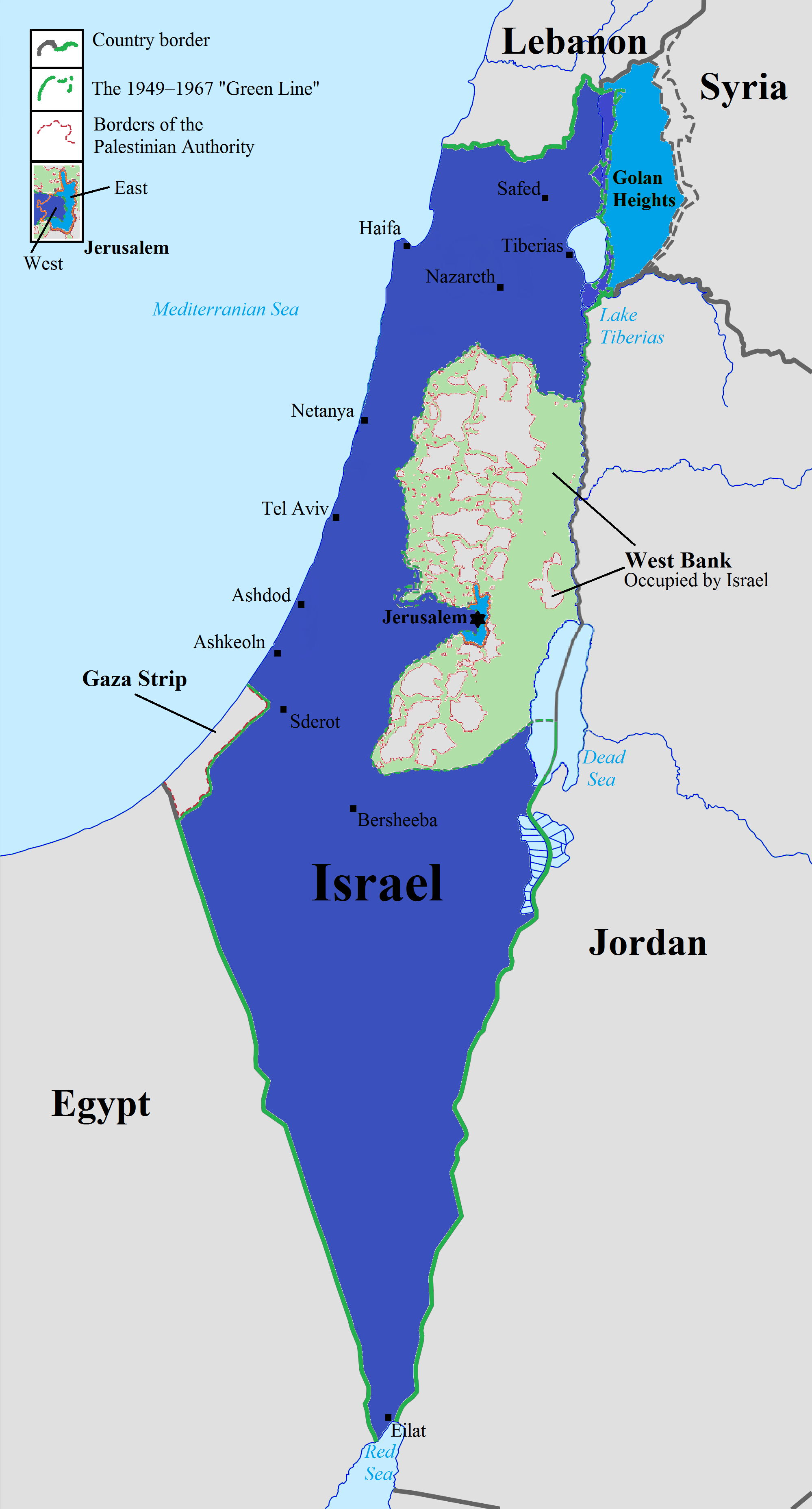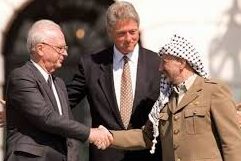Bernard Bohbot
The Jerusalem Post
In 2001-2002, revisionist scholars and journalists convinced the whole world (including me) that the Palestinian Authority was willing to accept the Clinton parameters with slight changes. But now that the PA has rejected two other peace plans based on the Clinton parameters in 2008 and 2014, it is clear that Clinton’s framework fell short of the Palestinians’ minimum demands.
Most pundits subscribe to the revisionist interpretation of the failed peace negotiations between Israelis and Palestinians from 2000 to 2014. Revisionists reject former US president Bill Clinton’s claim that in December 2000, Israel accepted his guidelines while the PA opposed them. They argue that both sides accepted them with reservations.
To be sure, in 2000/2001, Israel expressed one real reservation: it wanted a “special regime” to run the Holy Basin of Jerusalem (instead of dividing the area), so Jewish sites would not fall under exclusive Palestinian sovereignty.
Otherwise, Israel merely expressed disagreement with other provisions of Clinton’s framework, but there was no explicit demand (or ultimatum) to remove them. For instance, Israelis expressed “unhappiness” with the fact that Clinton’s framework called for a land swap encompassing 4%-6% of the West Bank. Israel sought an 8% swap.
They also expressed fear that granting Palestinian refugees a symbolic right of return to “historic Palestine” or “their homeland” might create ambiguity and open the door to further claims in the future. That said, Israel reiterated its willingness to negotiate within the framework of the Clinton parameters.
Moreover, at the Taba Summit, Israel dropped all reservations and went beyond the Clinton parameters. Ehud Barak allowed Yair Hirschfeld and Nimrod Novik to offer the Palestinians 100% of the West Bank – instead of the 97% Clinton called for – in addition to docking in Israeli seaports and a tunnel connecting the West Bank and Gaza.
By contrast, the Palestinians first rejected the Clinton parameters before accepting them, with several objections that completely deflated any aspiration of Clinton’s principles.

• Borders: Clinton’s framework called for a land swap encompassing 4%-6% of the West Bank, forcing Israel to remove 20% of Jewish settlers. The Palestinians insisted on a 2% swap only, compelling Israel to uproot 50% of the settlers.
• Jerusalem: Clinton called for a division of the city along ethnic lines. The Palestinians did not accept Israeli sovereignty over the neighborhood of Har Homa and part of the Armenian Quarter.
• Jerusalem holy sites: Clinton’s parameters called for a “vertical sovereignty” of the Temple Mount/Noble Sanctuary, while the PA demanded exclusive Palestinian sovereignty.
• Palestinian refugee issue: Clinton’s plan provided the Palestinians with a symbolic right of return to “historic Palestine” or “their homeland,” albeit most of the refugees would have had to resettle into the future Palestinian state.
However, the Palestinians insisted on exercising the right of return in Israel as well. They merely offered to implement their right of return “creatively” and “flexibly” to “accommodate Israeli concerns.” They were also adamant that Israel had to accept full (not partial) responsibility for the creation of the Palestinian refugee problem.

These open-ended terms insinuated that the PA wanted the refugee issue to remain on the table after the occupation ends. This blatantly contradicted the Clinton parameters, which intended to come to an agreement that would “put an end to all claims.”
IT IS UNCLEAR how many refugees the Palestinians expect Israel to absorb. In 2011, Al Jazeera and The Guardian revealed the so-called “Palestine Papers” and argued that the Palestinians wanted Israel to absorb only 150,000 refugees over a 10-year period, without mentioning that this number was “renewable thereafter at the agreement of both parties.”
Adi Schwartz and Einat Wilf have also gone through the Palestine Papers, and they revealed documents showing that the PA believes Israel must absorb between 500,000 and two million refugees before 2058. Obviously, Al Jazeera and The Guardian terribly mishandled the Palestine Papers.
It is noteworthy that Yasser Arafat also refused to endorse the 2003 Geneva Initiative that merely called for a 2.2% land swap and full Palestinian sovereignty over the Temple Mount/Noble Sanctuary. He praised this initiative but argued that it did not go far enough regarding the refugee issue.
In 2008, PA President Mahmoud Abbas walked away from a second peace plan based on the Clinton parameters presented by then-former prime minister Ehud Olmert. After Abbas failed to answer, Olmert sent Ron Pundak to Ramallah and offered to increase his offer, to no avail.
Many justify Abbas’s behavior by invoking Olmert’s indictment, which rendered him a lame duck. But Olmert wanted to leave an agreement in principle for his successor that would have turned the 2009 Israeli election into a referendum on peace. At the time, a clear majority of Israelis accepted the Clinton parameters.
Those who insist that Olmert had no legitimacy without a parliamentary majority fail to understand that no peace agreement can be passed without consulting the population, which requires a referendum or a new election.
Many forget that in 2008, Abbas, too, was considered a lame duck. His presidential term was coming to an end and he had no parliamentary majority (Hamas won the 2006 election). In 2000-2001 Ehud Barak also sought to get an agreement approved by referendum, as he had no parliamentary majority. No one complained.

(Wikimedia Commons)
Last but not least, on June 8, 2017, Washington Haaretz correspondent Amir Tibon revealed that in March 2014, Abbas walked away from another similar proposal made by the Obama administration.
Prime Minister Benjamin Netanyahu (who had already approved a preliminary version with fewer details regarding Jerusalem) had no say in the matter. Obama would go forward with his peace plan with or without Netanyahu’s rubber stamp.
Revisionists argue that Abbas was right to say no, as Netanyahu was unreliable. But Abbas could have accepted the John Kerry/Barack Obama framework if Netanyahu approved it as well.
It is time we face the truth. The Palestinians have rejected three offers based on Clinton’s parameters. They have endorsed the 2002 Arab League peace initiative, which has real potential but is also problematic, as it is vague regarding the refugee issue. That said, Clinton’s guidelines do not align with Palestinian demands. Many people want to sanction Israel to end the West Bank occupation. That will remain futile if the Palestinians keep rejecting Clinton’s framework. It takes two to tango, but the dance floor is empty.
Bernard Bohbot is a writer PhD student of history at the University of Quebec in Montreal, working on the tortuous relations between Jews, the Left, and the Israeli-Palestinian conflict.


